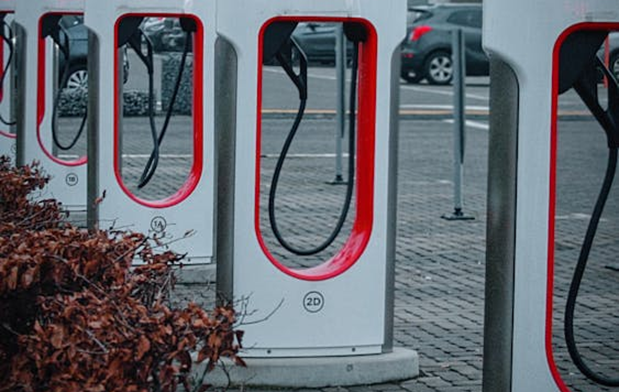
Common EV Charging Problems & Solutions
Electric vehicles (EVs) are rapidly gaining market share, yet their widespread adoption depends on the continuous development and expansion of charging infrastructure. Recent figures from the final quarter of 2023 indicate a significant increase of 5.2% in public EV charging stations, demonstrating an active commitment to enhancing this crucial network.
Significantly, the count of DC fast charging stations increased by 9.2%, illustrating focused initiatives to enhance high-speed charging facilities that greatly minimize user downtime and promote wider adoption of EV technology.
When we look into the common challenges and explore possible solutions for EV charging requirements, these figures provide a basis for a broader dialogue on making sure that infrastructure improvements match the growing need for electric vehicles. Let’s examine the challenges you may face and approaches for handling them.
Technical Failures and Maintenance
Technical issues can disrupt an EV owner’s routine, especially if they involve charging equipment or battery performance. Regular maintenance is critical to ensure the reliability of both the vehicle and the tools used to charge it. Keeping charging cables clean and free of wear, ensuring software updates are installed, and monitoring the vehicle’s battery health can prevent many common problems. Portable chargers and battery maintainers are also excellent tools to address unexpected situations where a traditional charging station may not be accessible.
For instance, if you own a 2017 Subaru Legacy or a similar vehicle, maintaining the battery in top condition is crucial, especially during periods of infrequent use or long-term storage. Using a reliable tool like the Noco Genius Smart Car Battery Charger for 2017 Subaru Legacy ensures that your vehicle’s battery remains optimally charged. By integrating such devices into your maintenance routine, you can avoid common problems and ensure your car is always ready to hit the road.
Slow Charging Speeds
The diverse range of charging speeds available can be perplexing for newcomers to electric vehicles (EVs), who may not yet grasp the differences between Level 1, Level 2, and DC Fast Chargers. Such variations can become a source of irritation, particularly in urgent situations or when time constraints demand rapid charging.
Additionally, some older EV models may not support the highest-speed charging options, compounding delays even when fast chargers are available.
Even newer vehicles sometimes require software updates to optimize compatibility with the latest charging technology, which owners may overlook. This mismatch between technology and infrastructure further underscores the importance of planning routes and understanding the capabilities of both the vehicle and available chargers.
Compatibility Issues
The diversity of charging standards complicates matters further for EV drivers traveling internationally or in regions with mixed networks. For example, while the CCS standard dominates in Europe and North America, CHAdeMO remains prevalent in parts of Asia. The absence of universal compatibility standards adds logistical challenges, requiring users to invest in multiple adapters or limit travel to areas where compatible stations are abundant.
This issue is compounded by some charging networks remaining exclusive to certain vehicle brands, further restricting access for drivers of other models. Standardizing charging technology across regions would significantly improve user experience and eliminate unnecessary obstacles.
High Costs of Charging
The economic burden of EV charging is particularly noticeable for drivers who rely on public charging stations rather than home setups. For instance, charging on a per-minute basis at public stations can lead to higher costs than charging based on energy consumption, especially for slower chargers. In areas with dynamic electricity pricing, peak-hour rates can make public charging prohibitively expensive, further widening the gap between EV ownership costs and accessibility.
Moreover, some stations include additional fees, such as activation charges or idle fees, which can further increase the cost for unsuspecting users. Exploring off-peak charging options, workplace charging incentives or subsidies for home charger installations could alleviate this issue.
Battery Degradation Over Time
Recent improvements in battery technology have reduced the worry about degradation, yet it still plays a crucial role for those who plan to keep their electric vehicles (EVs) over many years. High temperatures, regular use of high-speed charging stations, and frequent full discharges contribute to quicker deterioration of battery cells.
To counteract this, manufacturers are integrating more sophisticated thermal management systems and other technologies to extend the life of the batteries, although these enhancements typically increase the cost. Regular diagnostic tests can spot early signs of battery wear, enabling vehicle owners to take preventive actions before these issues degrade the car’s performance severely.
Additionally, educating vehicle owners about optimal charging techniques and ongoing maintenance can help them get the most out of their EV’s operational lifespan and efficiency.
Inadequate Charging Infrastructure
In numerous locations, the availability of electric vehicle (EV) charging stations is largely confined to urban centers or densely populated areas, leaving those in rural and suburban communities without nearby charging options. This concentration of resources creates significant hurdles for wider EV adoption, as it compels residents of less populated areas to undertake lengthy trips just to charge their vehicles.
The scarcity of charging options along major highways and in isolated regions further complicates the situation, restricting the viability of EVs for long journeys and limiting their use among specific groups of potential users.
To address these challenges, both governmental organizations and private sector companies are actively engaged in enhancing the EV charging network. Yet, progress is advancing slowly, leading to a significant gap between the rising demand for electric vehicles and the current supply of adequate charging facilities.Pexels
Conclusion
Challenges with EV charging infrastructure are persistent yet surmountable. Enhanced cooperation among governments, vehicle manufacturers, and network providers of charging stations can lead to more effective solutions, clearing the path for broader acceptance of EVs. Tackling issues related to infrastructure, improving the compatibility of technology, and reducing the costs associated with charging are pivotal steps toward easing the shift to electric vehicles. The prospects for electric vehicles are encouraging, and with strategic measures, current hurdles could become opportunities for breakthroughs and expansion.
creditSource link




